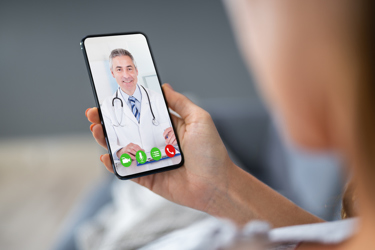How Trial Sites & Sponsors Can Deliver On Patient Convenience In The Age Of COVID-19
A conversation with Allyson Small, chief operating officer, Society for Clinical Research Sites

The coronavirus/COVID-19 pandemic has presented significant challenges to conducting clinical research and many other aspects of pharmaceutical development. However, this time has also given us the opportunity to take a closer look at the clinical trial experience through the lens of the patient. COVID-19 has highlighted why it is so important that sites be prepared to conduct clinical trial visits in new ways that are convenient to patients — whether that’s in the clinic, virtually, or in the home. In fact, the demand for tech to support remote clinical trials is happening now. A recent survey from Greenphire found that 69 percent of sites said they are currently leveraging various technologies to support at-home care.
We must be proactive in our planning and have a solution in place that enables sites to continue important clinical trial work and provide patients with convenient options when in-person visits are unfeasible. For insights on the impact of COVID-19 on patient convenience in clinical studies, and how sites and sponsors should respond, Clinical Leader reached out to Allyson Small, chief operating officer of the Society for Clinical Research Sites (SCRS) and a nearly 20-year-veteran of the healthcare industry.
How do you define patient convenience? Has this changed at all in the light of COVID-19?
 Allyson Small, SCRS: The basic fundamentals of patient convenience include doing whatever is necessary to make clinical trial participation as easy as possible for the patient. The “patient journey” needs to be one in which, at the end of their experience, they are not only pleased with their experience, but they have had such a positive experience that they want to share it with others.
Allyson Small, SCRS: The basic fundamentals of patient convenience include doing whatever is necessary to make clinical trial participation as easy as possible for the patient. The “patient journey” needs to be one in which, at the end of their experience, they are not only pleased with their experience, but they have had such a positive experience that they want to share it with others.
While nothing can change the fundamental components of patient convenience, COVID-19 has certainly shaped it. Right now, the best way we can continue doing whatever is necessary for the patient is to offer treatment options via telemedicine. While this technology has been slowly integrating into our industry over recent years, COVID-19 has forced immediate integration so we can continue serving our patients.
From an industry point of view, what are the biggest challenges for patient convenience?
Small: Time and cost can be a challenge for our industry when it comes to patient convenience. The patient may live far from the site and, out of convenience and in some cases out of necessity, would prefer that the visit occur closer to, or even in, their home. It may be difficult or simply not possible for the patient to take time off work, so having the ability to visit the site before or after normal working hours may play a significant role in their willingness or ability to participate.
While COVID-19 is forcing all industry players to evaluate the benefits and value of incorporating telemedicine, it is undeniable that being able to treat patients remotely increases patient convenience by putting treatment at their fingertips and in their homes. The biggest challenges lie in the ability to tailor our approaches to each individual.
How are sites specifically taking action to ensure patient convenience when conducting a trial? Anything new during a time when patients are being told to stay home and socially isolate?
Small: Many of the sites with the happiest patients have two things in common: 1) they ensure the patient journey is all about the patient, and 2) they employ individuals who intimately understand the experience of trial participation, whether it be that they have personally participated in a trial or that they have family members or loved ones who have. One of the ways sites can ensure patient convenience is to mentally walk through the entire patient experience. It may sound silly, but even driving up to the research site can help. Is our practice’s sign visible? How far does the patient have to walk to reach the site’s front door? How long do they have to wait to see a coordinator or physician? Are they greeted with a warm smile and friendly face upon entering the front door? The sites that ensure the patient journey is all about the patient experience the most success.
The set of questions that pertains amidst the pandemic is very different, but mentally walking through the process is still important. If your site is still physically seeing patients, what precautions have you put in place to protect patients and staff? Are those precautions shared with patients so they can have a more relaxed experience during their visit? Are signs posted outside the building and inside your office that direct patients appropriately? Are you offering curbside treatment when possible? Have you reached out to patients individually to communicate any changes? What procedures does your site have in place to transition qualified visits to telemedicine? Sites should keep in mind that treating patients well includes treating their staff well, too. You cannot expect staff that are not clear on procedures or don’t feel protected by their employer to extend warmth to patients that they are not receiving themselves.
How are pharma companies taking action around patient convenience?
Small: Patient convenience is dictated by the protocol and what it states sites and patients must do. One of the primary and most important actions that some pharma companies are taking to improve patient convenience is changing how protocols are written to include flexibility for how patient visits are conducted (i.e., telemedicine). Today’s protocols are often written in such a way that a visit can be conducted at the site’s physical location, at the patient’s home, or completed virtually. Including this level of flexibility in protocols allows sites to extend more flexibility — and thus convenience — to their patients.
What are the biggest improvements you’ve seen toward improving patient convenience in the past year? What about the past few months?
Small: By far the biggest improvement is the introduction and integration of telemedicine into protocols, which creates the ability to conduct some visits virtually. As an industry, we need to make it as easy and convenient as possible for patients to participate. Another vast improvement is the ability to use services such as Lyft and Uber to help with transportation to and from the site.
Can you address why travel accommodations are a necessity for the industry?
Small: There are many people who simply do not have the means to physically travel to the research site. Parking and the related fees are often a deterrent as well. Working with ride sharing companies can lessen the burden on a potential patient who wants to participate in a study but simply cannot physically get to the site. It opens the door to trial participation for many patients who otherwise would not be able to participate. It also allows sites to reach, enroll, and treat patients that they would not be able to without travel accommodations.
How can sponsors/sites begin to think about patient needs when designing a trial?
Small: As an industry, we are starting to realize how important the patient journey is. The time commitment, the potential financial loss from taking time off work, and the costs associated with participating in a research study are all significant factors that play into a patient’s decision to participate. Sponsors and sites can effectively navigate these concerns by realizing that some visits can be conducted virtually and adopting telemedicine practices, thus decreasing the number of physical visits required at the site and allowing at-home or remote visits when appropriate. These options must be written into the protocols, and patient stipends must be provided at a level where patients aren’t sacrificing financially in order to participate in a study.
What should sites consider adding/eliminating to improve patient convenience overall? And especially now during the pandemic?
Small: The best thing sites can do is treat patients the way they want and deserve to be treated. This starts at the initial phone call — was the patient treated as if they were the most important part of the conversation? Was it about getting someone screened, or was it about helping the individual understand the importance of research and how their participation helps not only them but future generations? Was it convenient for the patient to come into the office that day? Does the site open early or stay late to accommodate the working class? Are weekend options available? Once in the office, how long did the patient have to wait before being seen? Are options available where patients have no out-of-pocket expenses like gas, parking tickets, etc.? Are sites reimbursing these costs as quickly as possible when they are incurred? Are sites able to offer a debit card that is loaded before the patient leaves the office? Is it possible to conduct some visits virtually rather than requiring that patients physically come to the office for every visit? Are sites offering a survey to patients so they can learn what could have gone better and improve accordingly? In what other ways can the site make the patient’s experience more convenient?
During this pandemic, it is imperative that sites not only consider adopting telemedicine, but that they actually do it, whenever possible. It is also imperative that sponsors provide sites with the support needed to do that, i.e., funding, training, and time. Telemedicine is the single most important factor for sites being able to keep their doors open so clinical trials that are creating potentially life-saving treatments and medicines can continue.
The entire patient journey must be one in which patients feel empowered and grateful to be a part of advancing medicine — so much so that not only do they want to participate again but are inclined and excited to share their research experience with others.
